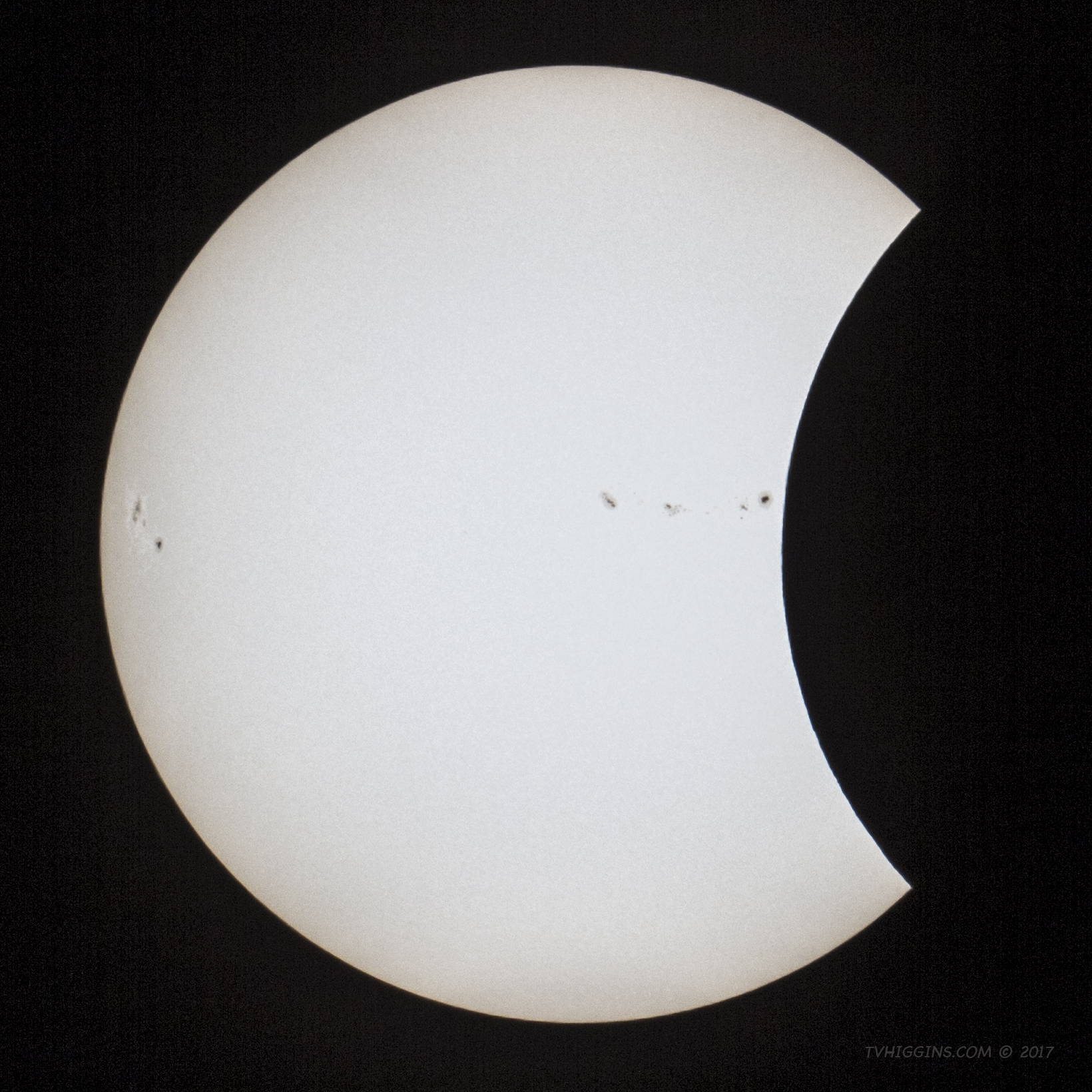Eastern Veil Nebula (NGC 6992)
[NOTE: A newer, reprocessed version of this image is available here: https://tvhiggins.com/astroimaging/veil-nebula-revisited/]
- Telescope: Stellarvue SVA130T-IS
- Mount: Losmandy G-11 with Gemini 2 controller
- Autoguiding: Yes
- Optical Configuration: 0.72x field flattener & reducer (f/5)
- Camera: Canon 60Da
- Light Frames: 25, 5-min. exposures
- Calibration: None (no darks, no flats, no biases)
- Exposure Time: 125 min. (25 x 5 min.)
- ISO: 1250
- Processing: Photoshop CC
- Imaging Location: Prairie City, Ore.
The Veil Nebula poses something of a challenge for astrophotographers. Located in a dense star field in the constellation Cygnus, this relatively dim emission nebula must compete for attention among thousands of stars. The nebula is the remainder of a star that exploded about 5,000 to 8,000 years ago, and the debris from it has now spread out to cover about 3 degrees of our sky, or six moon diameters. The Veil Nebula is roughly 1,500 light-years away from us.
The image above shows the Eastern Veil Nebula, or NGC 6992, as astronomers call it. Like the name implies, it is the eastern part of a roughly circular structure that includes the Western Veil Nebula (NGC 6960). The red colors come from hydrogen gas, and the blue colors come from oxygen gas as the shock wave from the original explosion slams into the interstellar medium at nearly 400,000 miles per hour.
To feature the nebula but not the stars, the image above was processed to remove the brightest stars. Without this processing, the image would look like this:


